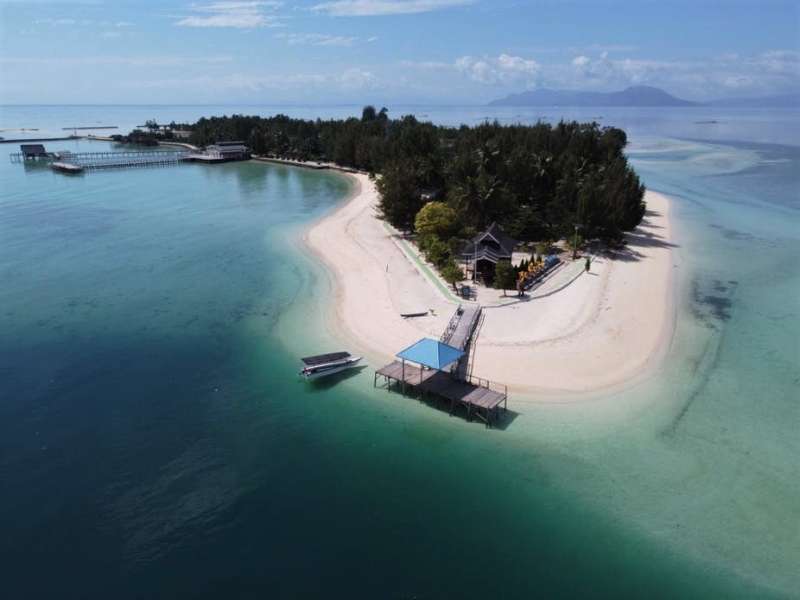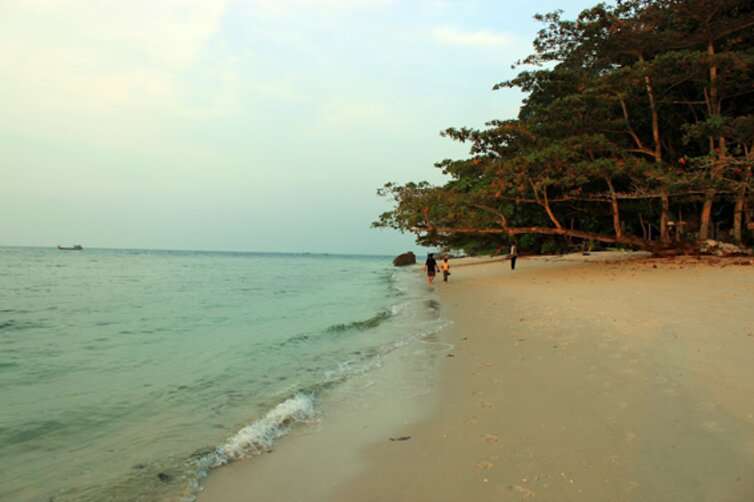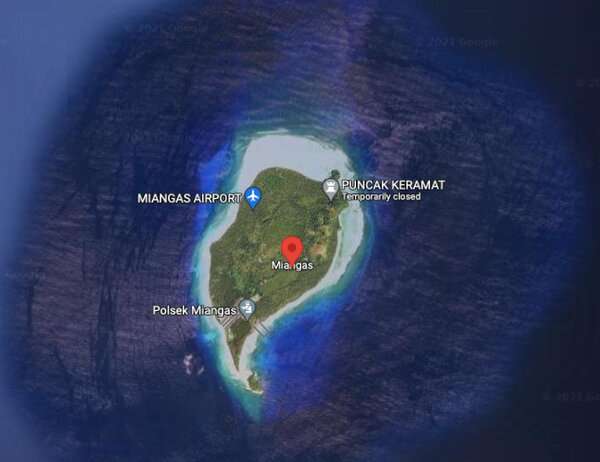Climate change might mean several of Indonesia's small islands have no future

As the world's largest archipelagic country, Indonesia should be showing more concern about the impact of climate change on small islands.
Sea level has risen by around 21–24cm globally since the pre-industrial level as a result of melting ice in the Arctic and Antarctic.
A recent study by Indonesia's National Research and Innovation Agency (BRIN) estimates that at least 115 of Indonesia's small islands are on the verge of sinking. This is due to sea-level rise and land subsidence.
The research and advocacy organization Climate Central calculates that a one-meter rise in sea level will flood the northern shore of Java island, one of the most densely populated islands in the world. This is because of the coastal terrain's low slope (between 0 and 20 degrees).
This threat is becoming visible. Our 2011 research showed sea-level rise had sunk some parts of small islands. Without aggressive mitigation efforts, BRIN's forecast could become a reality.
How sea level rise
As a result of sea-level rise, bigger waves will "redesign" coastlines. The land sediments can also fall into the sea, causing erosion and flooding in other areas—which will sink small islands sooner or later.
Our study found Rondo Island, located at the western area of the Malacca Strait in Aceh province, lost 1,856 square meters (m²) of land each year from 1993 to 2009 because of annual sea-level rise that reached 1.30mm per year.

Berhala Island, located in the eastern area of Malacca Strait in Riau province, recorded a higher trend (about 3.46mm/year). So has Nipah Island, which is close to Singapore, which sees a 3.48mm annual rise.
These rises reduced the area of the two islands by 3,178m² and 3,409m² (about half the size of a professional football pitch) per year, respectively, from 1993 to 2009.
The interim result of ongoing study (unpublished) by a research team from the Department of Marine Science of Padjadjaran University in West Java found the area of five of Indonesia's remote islands had shrunk. Over a decade, these land reductions ranged from 0.005km² to 0.09km²—nearly equal to 13 football fields.
The change is estimated by using pixel analysis of several satellite photographs. This image was converted to a polygon—connected dots—which we then we calculated with a field calculator.
We found Miangas Island (3.2km²), which lies near the border of Indonesia and the Philippines, has lost 0.02% of its area (around 0.00064km²/year) since 2004.
The same fate is facing Sekatung Island (1.65km²) in Kepulauan Riau province, which is experiencing loss by 0.66% of the area (0.01989km²) per year.
Since 2004, Berhala Island has also lost an area of 0.002km²/year.
Islands in eastern Indonesia face the same risk. For example, in the northern area of Cenderawasih Bay in Papua, Workbondi Island—which covers an area of 1.62km² or two times as big as China's Forbidden City—experienced a 0.004km²/year of area decline.

Candikian Island and Gosong Island, both in southern Java Sea, were nearly submerged. Only a few square meters of land remain, with no more than two meters elevation above sea level.
Meanwhile, the area of Biawak Island—located in the same sea—has shrunk by half the size of Vatican City (0.22km²) annually. We predict this island will sink when the sea-level rise reaches 0.5 meters.
Immediate prevention and adaption actions
We should accept the fact that climate change has already caused irreversible damage. Even if the best risk-reduction efforts have been made, sea level is still expected to increase by at least between 0.6m and 1.1m by 2100, under various scenarios.
Adaptation efforts must be undertaken. One example is planting maritime pine (Casuarina equisetifolia) on a sand-structured island as has been done in Taka Bonerate National Park in the Selayan Islands, South Sulawesi province. Maritime pines help to reduce erosion as well as enhancing soil quality.
Indonesia could also follow the example of Dubai, in the United Arab Emirates, which has developed technology for land reclamation and coastal protection. This approach needs extensive planning and massive funding.
Communities in the coastal areas, in particular, must increase their resiliency to this crisis. More stilted houses must be built to adapt to the worsening coastal inundation.
In the country's recent climate pledge, Indonesia has committed to cut emissions by 29–41% by 2030. This pledge, which was also submitted by other countries, will be presented at the UN's climate talks (COP26) in Glasgow.
This conference is an important opportunity for Indonesia and other island countries to define actions in working towards zero emissions by 2050, or maybe sooner, which will decide the future existence of small islands.
Provided by The Conversation
This article is republished from The Conversation under a Creative Commons license. Read the original article.![]()




















